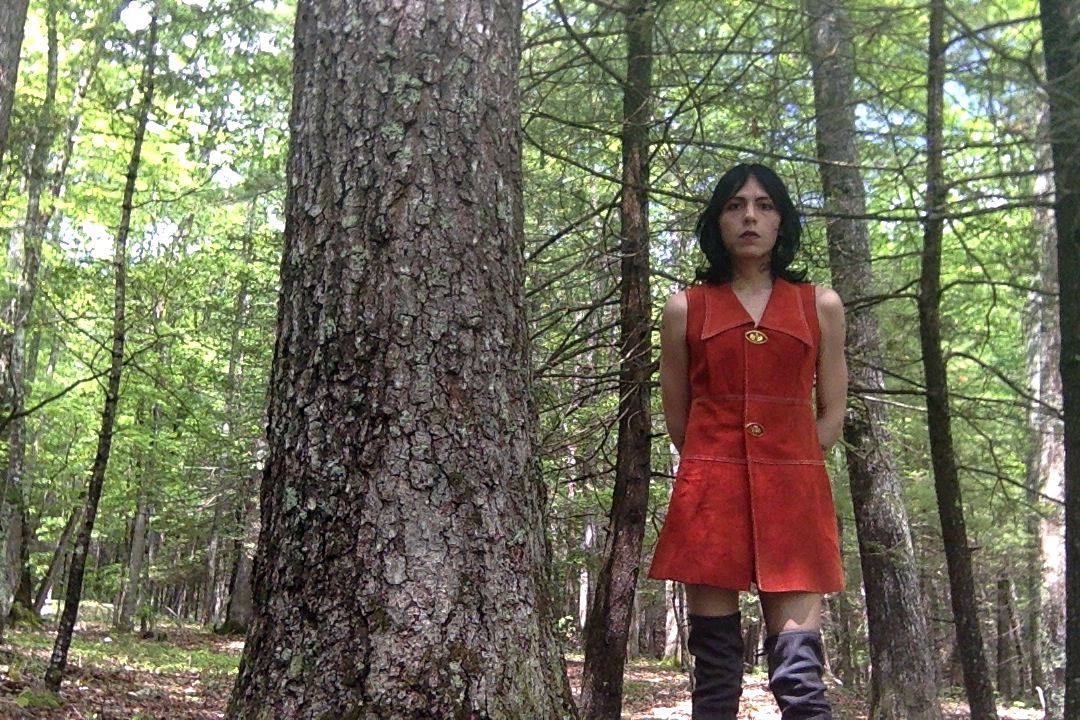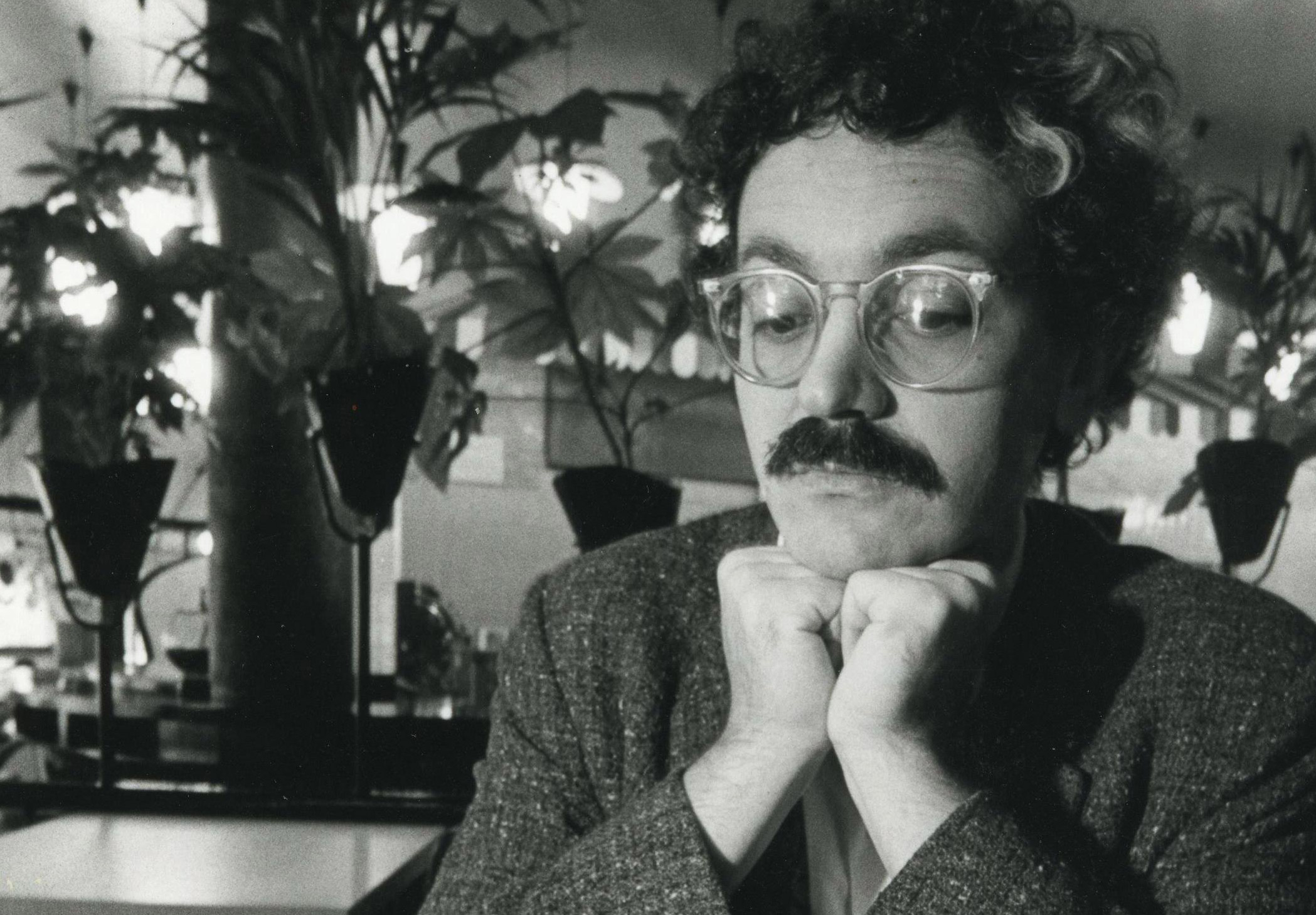An Introduction to E.A.T. - Engineers, the Avant-Garde and a Tennis Court
Sophie Weiner introduces the pioneering organization and the subject of our new documentary
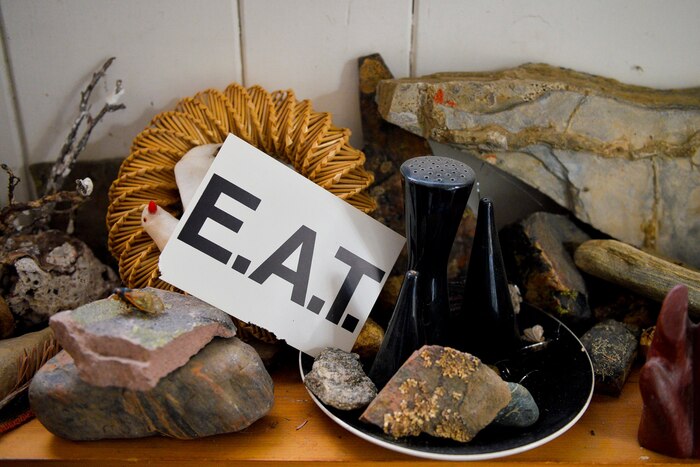
On March 18th, 1960, a sculpture on the roof of New York’s Museum of Modern Art began to destroy itself. Engines attached to old baby carriages sent them careening through the space, mechanical arms banged out a dissonant tune on a piano and a paintbrush colored an unfurling paper that just as quickly caught on fire. The piece, titled Homage to New York and built by the French sculptor Jean Tinguely alongside engineer Billy Klüver, was created in order to self-destruct. The performance was the beginning of a series of collaborations that would bring together the worlds of art and technology in ways that were unimaginable in mid-century America.
Klüver, originally from Sweden, was a technician at Bell Laboratories, whose innovations in the ’60s and ’70s paved the way for the digital age. An egalitarian and experimental ethos allowed Bell Labs to foster an incredible wellspring of creativity in these decades. The title of every Bell Labs engineer was “Member of Technical Staff,” whether they were the lowest entry-level hire or one of the company’s presidents. Experimentation without a specific end goal was embraced – as long as their engineers were working on something interesting, Bell Labs didn’t worry about their work immediately translating into something that could be sold. The strategy paid off: In these years Bell Labs launched the first telecommunications satellites, invented the omnipresent C programming language and, most importantly, designed the transistor, the technology that allowed computers to shrink from the size of buildings to something that can fit in your palm.
Yet Klüver believed that even the uniquely innovative environment of Bell Labs could be improved by outsiders. He began to hang around the avant-garde artistic circles flourishing in Downtown Manhattan. At this time, a deep divide existed between the worlds of art and technology. Artists saw engineering as the realm of war machines and algorithms that would negate the individual, creating mass conformity. Meanwhile, Bell Labs engineers were largely unaware of the revolutionary art happening just a few miles away in Manhattan. As Klüver got to know more artists, he realized there could be a mutually beneficial relationship between the two groups, aiding artists with their work while expanding the minds of engineers.
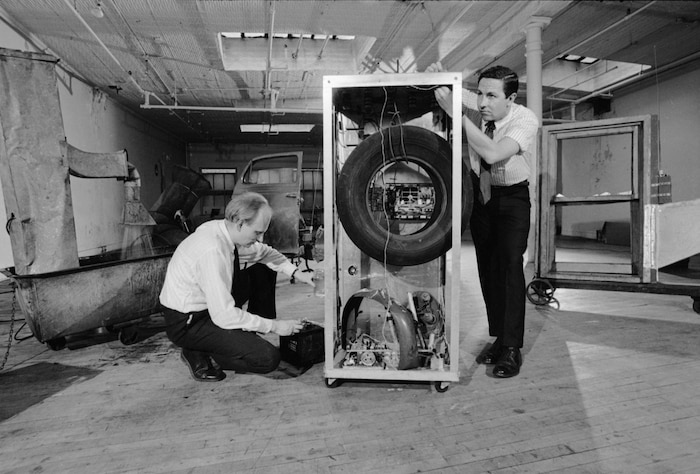
The era was as exciting for art in New York City as it was for technology. Pop artists like Andy Warhol, Jasper Johns and Robert Rauschenberg were reshaping what could be understood as a work of art. At the Judson Memorial Church in Greenwich Village, choreographers like Merce Cunningham and Yvonne Rainer were reinventing dance as a medium that incorporated everyday movements alongside virtuosic talent. And in the world of music, composers like John Cage were exploding the rules of sound.
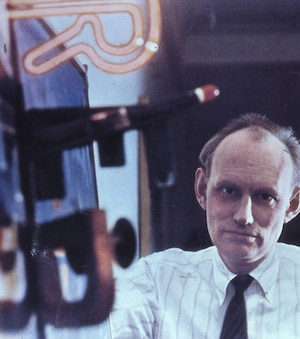
Klüver was interested in working with some of these pioneering artists. His friend, Pontus Hulten, was a curator at the Museum of Modern Art, and it was Hulten who connected Klüver to the sculptor Tinguely, kickstarting their collaboration. During this time, Klüver also worked with Rauschenberg on a mechanical sculpture entitled Oracle, with Johns on Field Painting (involving the first battery-powered neon letter) and with Warhol on the famous Silver Clouds, floating rectangular balloons made from the Mylar-like material used by Bell Laboratories for their early satellites.
In 1966, Klüver, along with Rauschenberg, began to put together an ambitious exhibition of projects that paired engineers with artists for the Stockholm Festival of Art and Technology. After the collaboration with the festival fell through, the group decided to pursue the idea in New York City instead. They chose the 69th Regiment Armory, a massive indoor space that was famously used for the 1913 Armory show that helped introduce America to modern art.
An art project of mass proportions began to take shape. It would become 9 Evenings: Theater and Engineering, a collaboration between artists like Cage, Rauschenberg, Rainer, David Tudor and others with 30 engineers from Bell Labs. The group prepared frantically, transforming the Armory into an arts space that could hold an audience of thousands. In the weeks leading up to the event, the engineers built a revolutionary system called TEEM, a central computer that could control each performance’s cues, turning on and off lights, moving set pieces and switching on and off cameras and microphones.
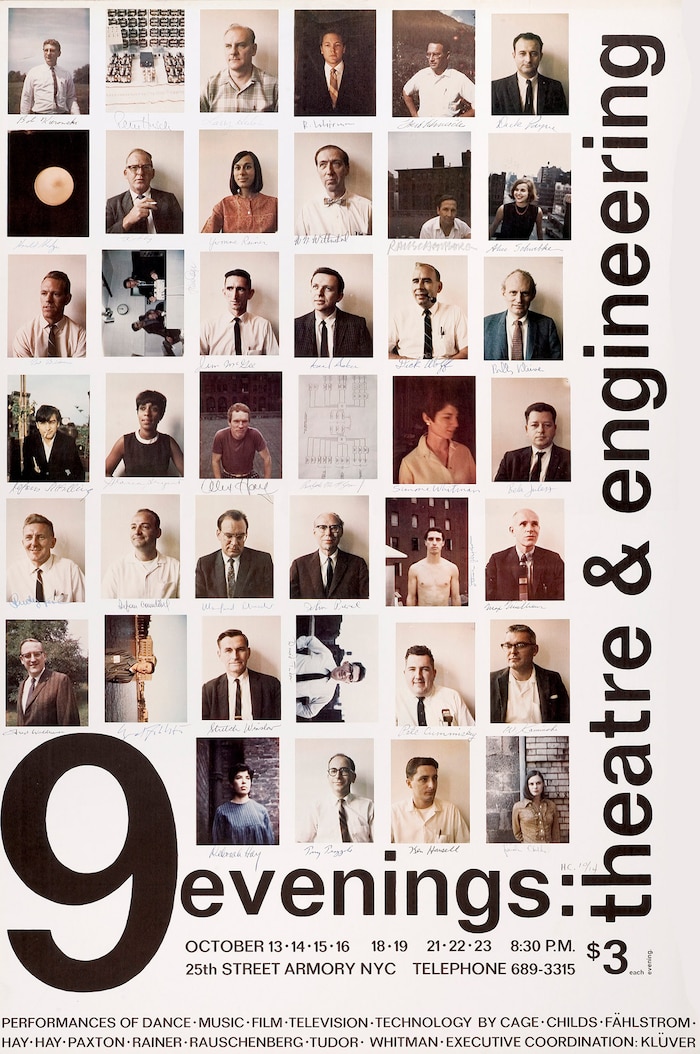
9 Evenings used novel technology like wireless microphones and fiber optic cables to enhance the artists’ work. Rauschenberg’s piece Open Score had him playing tennis with rackets wired to make a loud booming sound and to turn off a light in the space each time he hit a ball. After the tennis match darkened the entire space, Rauschenberg flooded it with infrared light and shuttled hundreds of people from a subway train through the space. They could only be seen on the infrared-sensitive cameras whose images were projected above. It was the first time infrared light was used for an art piece in the United States – at the time, it was classified technology for military use only, so Rauschenberg had to buy the equipment from Japan.
Cage’s Variations VII used a huge array of auditory inputs, including ten phone lines connected to places like a local restaurant and the Bronx Zoo Aviary, along with the sounds of dozens of radio and TV stations, two Geiger counters and six contact mics attached to devices like toasters and blenders within the space. Cage switched between these feeds, combining and mixing them live. The artist Robert Whitman drove seven cars holding projectors into the Armory, some showing scenes of dancers being filmed live elsewhere in the space. The work was radical at the time, but it foretold a future where seeing a live event from a variety of perspectives at once is commonplace.
The time crunch leading up to the event meant that much went wrong during the nine nights of shows. Even when the technology did work, audiences didn’t know what they were seeing, and many walked out in disgust. But the group who had participated felt that the event demonstrated the value of bringing together engineering and art. The engineers were inspired to create new technology, and the artists ideas were pushed in new directions by the engineers’ interpretations. The event pushed Klüver to found an organization, Experiments in Art and Technology (E.A.T.), which would connect artists to engineers, providing a space where technology and creativity could meet.
In 1968, Klüver took an offer from his curator friend Hulten as a chance to lure more engineers into the fold. The Museum of Modern Art was putting on a show, The Machine Seen at the End of the Mechanical Age, and Hulten wanted Klüver to help find contemporary artists who used technology in their works. E.A.T announced a competition for collaborations between artists and engineers to land a spot in the show, where the engineer would be named as the winner instead of the artist. They received over 150 submissions, nine of which – including the early ASCII-style work Computer Nude by Kenneth Knowlton – made it into the show. But E.A.T. were so impressed by the submissions that they decided to exhibit all of them. These were shown at Some More Beginnings, a show at the Brooklyn Museum in late 1968, including a laser installation by Bob Whitman and an interactive sculpture by Jean Dupuy using amplified heartbeats.

By 1968, there were over 4,000 members of E.A.T. and multiple spin-off groups in cities around the country. The organization devised a basic analog computer to connect artists and engineers, using index cards with holes that delineated their interests and skills. Through the next several years, it’s impossible to know how many works were born from these connections. But in 1970, the group created their most ambitious project since 9 Evenings when they began work on the Pepsi Pavilion for the 1970 World’s Fair in Osaka, Japan.
Rauschenberg persuaded Pepsi’s marketing team to fund the building of a futuristic structure for performances and spectacles at the fair. The initial outlay was some $500,000, although the end result would cost much more. E.A.T. was provided with an already-constructed building to work with: a geodesic white dome that they hated, calling it a “buckled Fuller.” Their displeasure with the structure inspired one of the Pavilion’s most memorable characteristics: the dense fog, created by the artist Fujiko Nakaya, that obscured it from view.
Inside the dome, the engineers worked to figure out how to create a spherical mirror by inflating the same Mylar used for Silver Clouds, allowing visitors to see a holographic, upside-down representation of themselves when they looked up. The artist Robert Breer built “floats,” white domed fiberglass sculptures that moved slowly outside the pavilion’s entrance. E.A.T. planned a series of performances to occur within the space, but a little more than a month after its opening, Pepsi assumed control over the pavilion. E.A.T.’s experimental definition of entertainment and their continued overspending was too much for the corporation, and Pepsi soon replaced the performance art with concerts by accessible pop groups.
Around the same time as their difficult Pepsi Pavilion experience, E.A.T. was inspired to move their work outside the art world. Projects Outside Art reflected E.A.T.’s idealistic vision of the artist as a partner in social projects. Launched with a poster in December 1969, the project called for submissions of “realizable projects in the environment.” By June 1970, the group had received about 115 submissions, many of which were from architects and focused on sustainability and pollution. One project that was accepted was City Agriculture, a hydroponic roof garden to be built at E.A.T.’s headquarters on East 68th Street.

The final, and most interesting project undertaken in Projects Outside Art was known as Children and Communication. Two sites in Manhattan were connected via live video, fax machines and computer terminals at which children could type each other messages. What emerged was a kind of proto-internet given over to play and experimentation.
Perhaps unsurprisingly, the result of the experiment was that the children used their newfound interconnectivity to send insulting language and even threats of violence to each other. It was a subtle warning of the power of new communications technology to both expand and endanger the lives of its users.
E.A.T. worked on projects throughout the 1970s, but towards the end of the decade the organization began to dissolve. E.A.T. was not designed to last. Rather, Klüver said, “If E.A.T. [is] successful, it [will] automatically disappear, because if everybody understands the idea of artists and engineers working together there is no reason for E.A.T. to exist.”
By that metric, the organization was a fantastic success. It’s difficult to enter a museum today without encountering multiple pieces made in collaboration with engineers or programmers, and interactivity, which was a cornerstone of many E.A.T. projects, is commonplace in artworks today. E.A.T. succeeded in closing a divide that was holding both artists and engineers back from reaching the full potential of their mediums, created a future where technology and art, in tandem, can help to build a better society.
